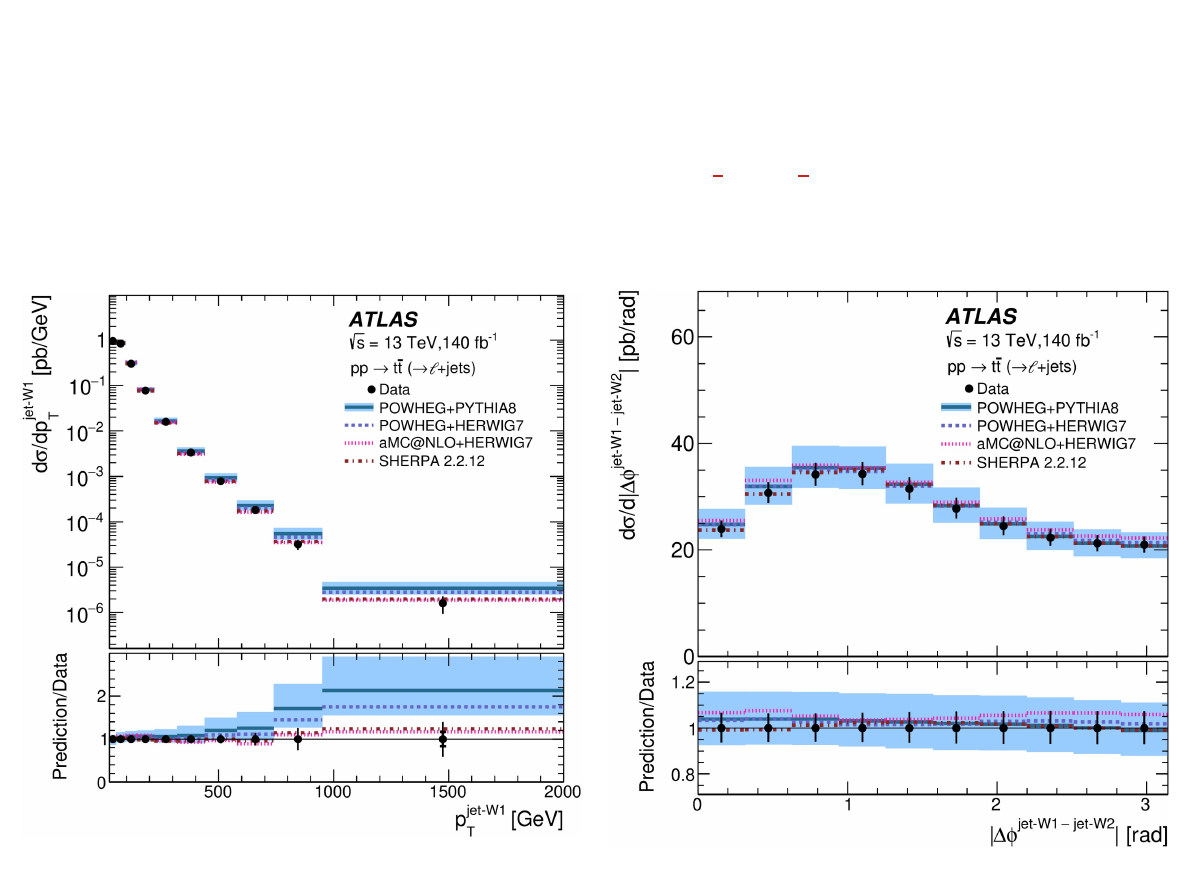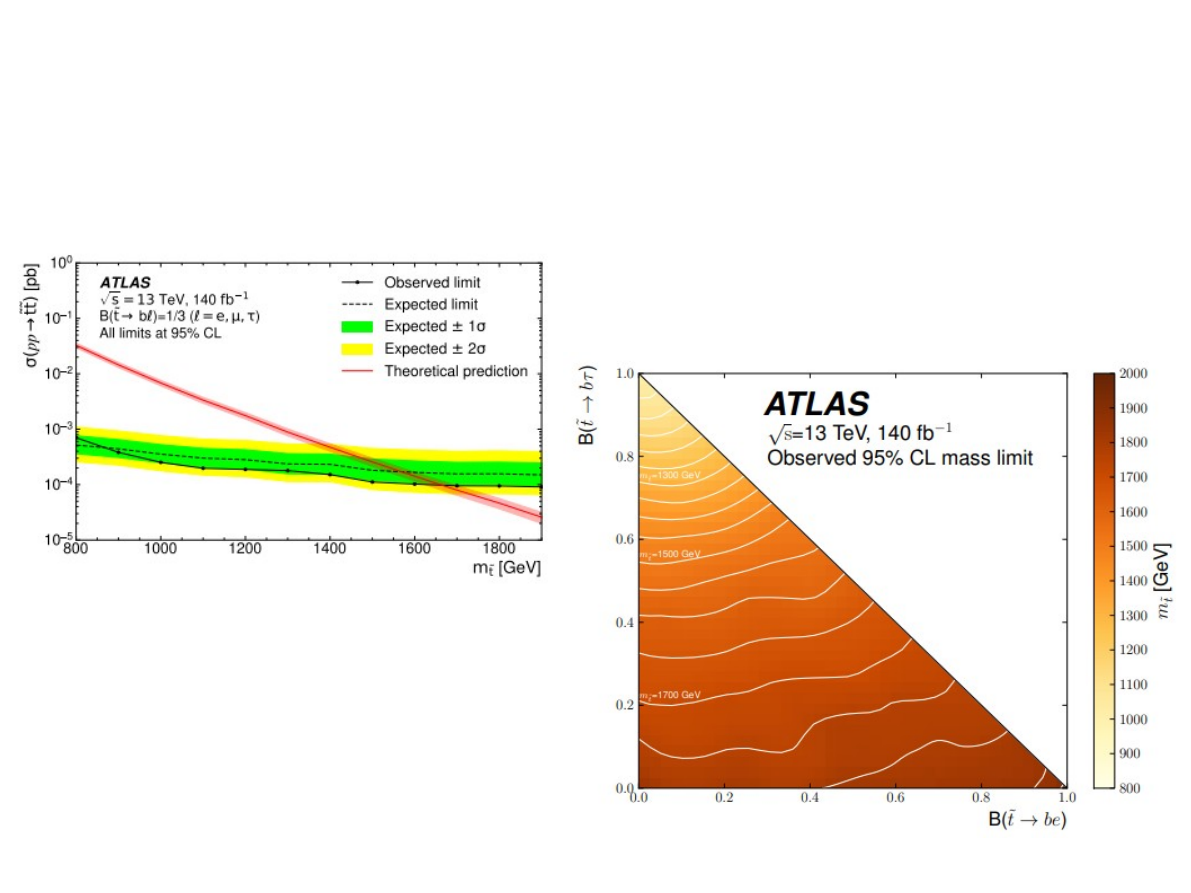
arXiv Summary
July 3
rd
, 2024

arXiv Summary
July 3
rd
, 2024

2
Expt(1)
ATLAS Collab.
Search for decays of the Higgs boson into a pair of pseudoscalar particles decaying
into bbτ
+
τ
−
using pp collisions at √s=13 TeV with the ATLAS detector
This paper presents a search for exotic decays of the Higgs boson into a pair of new
pseudoscalar particles, H→
aa
, where one pseudoscalar decays into a b-quark pair and the other
decays into a τ-lepton pair, in the mass range 12≤m
a
≤60 GeV. The analysis uses pp collision data
at √s=13 TeV collected with the ATLAS detector at the LHC, corresponding to an integrated
luminosity of 140 fb
−1
. No significant excess above the Standard Model (SM) prediction is
observed. Assuming the SM Higgs boson production cross-section, the search sets upper limits
at 95% confidence level on the branching ratio of Higgs bosons decaying into bbτ
+
τ
−
,
B(H→
aa
→bbτ
+
τ
−
), between 2.2% and 3.9% depending on the pseudoscalar mass.

3
Expt(1)
ATLAS Collab.
Search for decays of the Higgs boson into a pair of pseudoscalar particles decaying
into bbτ
+
τ
−
using pp collisions at √s=13 TeV with the ATLAS detector

7
Expt(2)
ATLAS Collab.
Measurement of differential cross-sections in tt and tt+jets production in the
lepton+jets final state in pp collisions at √s=13 TeV using 140 fb
−1
of ATLAS data
Differential cross-sections for top-quark pair production, inclusively and in association with
jets, are measured in pp collisions at a centre-of-mass energy of 13 TeV with the ATLAS detector
at the LHC using an integrated luminosity of 140 fb
−1
. The events are selected with one charged
lepton (electron or muon) and at least four jets. The differential cross-sections are presented at
particle level as functions of several jet observables, including angular correlations, jet
transverse momenta and invariant masses of the jets in the final state, which characterise the
kinematics and dynamics of the top-antitop system and the hard QCD radiation in the system
with associated jets. The typical precision is 5%-15% for the absolute differential cross-sections
and 2%-4% for the normalised differential cross-sections. Next-to-leading-order and next-to-
next-to-leading-order QCD predictions are found to provide an adequate description of the rate
and shape of the jet-angular observables. The description of the transverse momentum and
invariant mass observables is improved when next-to-next-to-leading-order QCD corrections
are included.

8
Expt(2)
ATLAS Collab.
Measurement of differential cross-sections in tt and tt+jets production in the
lepton+jets final state in pp collisions at √s=13 TeV using 140 fb
−1
of ATLAS data

9
Expt(3)
BESIII Collab.
Protonium: Discovery and Prediction
Bo-Qiang Ma
The Beijing Spectrometer (BESIII) Collaboration reconstructed the invariant mass of three pairs
of positive and negative pions by studying the decay process of charmonium to a photon and
three pairs of positive and negative pions. They discovered the resonant structures X(1840) and
X(1880), which are interpreted as the predicted proton-antiproton bound states, also known as
protonium. This article briefly introduces the experimental discovery processes of these
resonant structures and discusses the theoretical explorations inspired by them. The
predictions proposed by these theoretical explorations offer a new perspective for studying the
nature of these particles and new decay modes. Therefore the collaborative exploration of
experiments and theory plays a positive role in deepening understanding of the fundamental
laws of nature.

11
Expt(4)
ATLAS Collab.
A search for R-parity violating supersymmetric decays of the top squark to a b-jet
and a lepton in √s = 13 TeV pp collisions with the ATLAS detector
A search is presented for direct pair production of the stop, the supersymmetric partner of the
top quark, in a decay through an R-parity violating coupling to a charged lepton and a b-quark.
The dataset corresponds to an integrated luminosity of 140 fb
−1
of proton-proton collisions at a
center-of-mass energy of √s = 13 TeV collected between 2015 and 2018 by the ATLAS detector at
the LHC. The final state has two charged leptons (electrons or muons) and two b-jets. The results
of the search are interpreted in the context of a Minimal Supersymmetric Standard Model with
an additional B−L gauge symmetry that is spontaneously broken. No significant excess is
observed over the Standard Model background and exclusion limits on stop pair production are
set at 95% confidence level. The corresponding lower limits on the stop mass for 100% branching
ratios to a b-quark and an electron, muon, or tau-lepton are 1.9 TeV, 1.8 TeV and 800 GeV,
respectively, extending the reach of previous LHC searches.

12
Expt(4)
ATLAS Collab.
A search for R-parity violating supersymmetric decays of the top squark to a b-jet
and a lepton in √s = 13 TeV pp collisions with the ATLAS detector

13
Expt(4)
ATLAS Collab.
A search for R-parity violating supersymmetric decays of the top squark to a b-jet
and a lepton in √s = 13 TeV pp collisions with the ATLAS detector

14
Expt(4)
ATLAS Collab.
A search for R-parity violating supersymmetric decays of the top squark to a b-jet
and a lepton in √s = 13 TeV pp collisions with the ATLAS detector